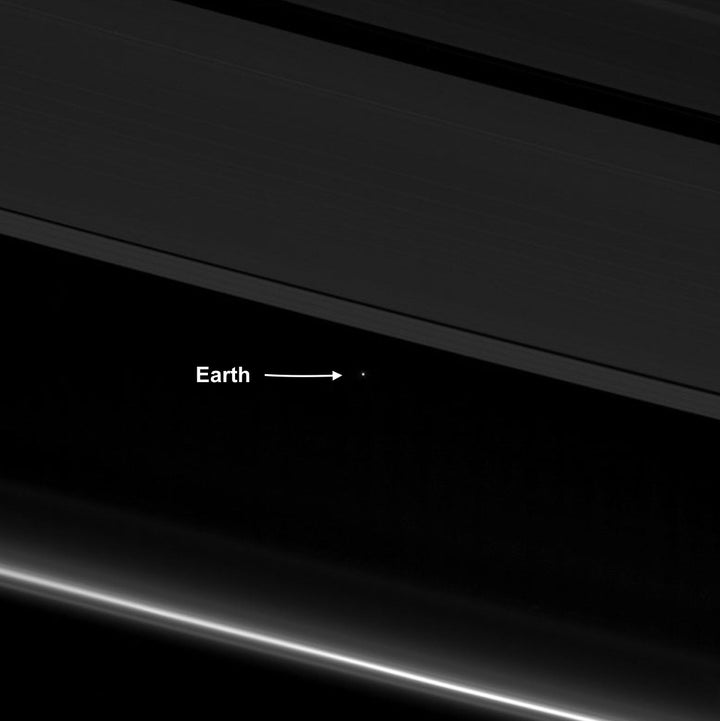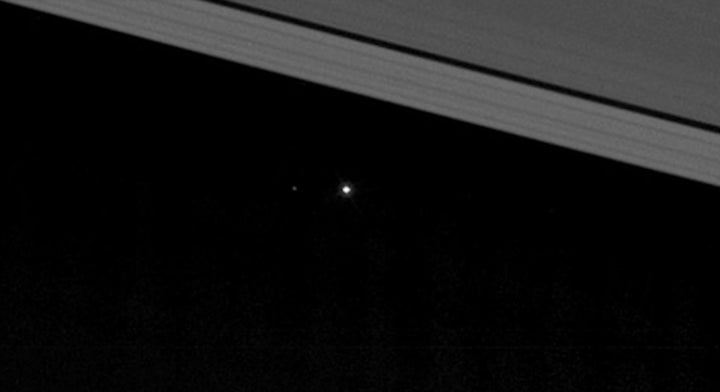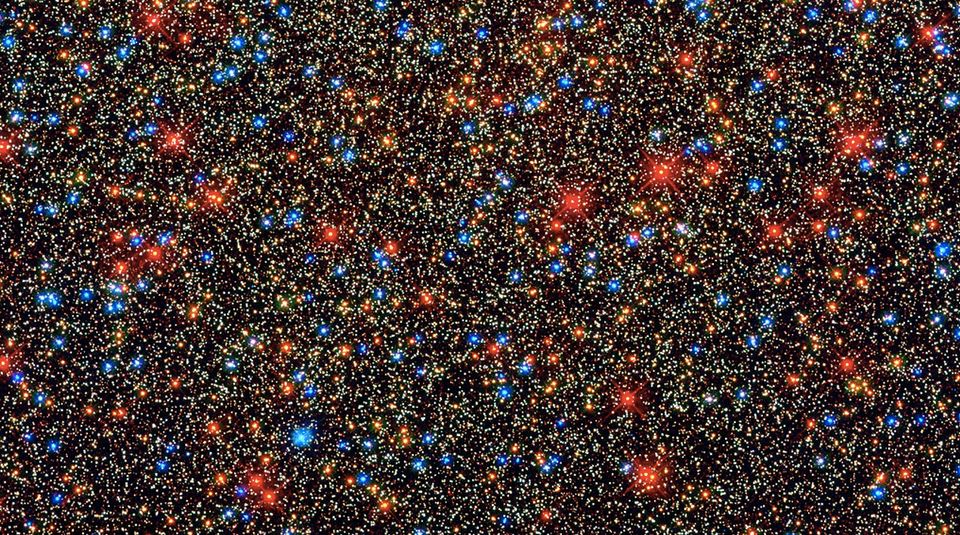
As NASA’s amazing Cassini spacecraft takes on technological death-defying feats months before it goes into a final plunge into Saturn’s atmosphere, it continues to transmit images back to Earth of things never seen before so close to a giant planet.
This week, Cassini flew through the relatively short 1,500-mile gap that separates Saturn’s enormously intricate ring system from the top of the planet’s atmosphere, transmitting precious data back to Earthbound scientists.
Cassini also this month beamed home ― through Saturn’s icy rings ― a unique image of Earth, 870 million miles away, as seen above.
That very tiny dot in space represents everything we are, our continents and oceans ― everything about where we are in the cosmos.
And if you need to strain your eyes to see both Earth and our moon, here’s a zoomed-in version of us with the moon to our left:

It offers an interesting perspective on our place in our little neighborhood of the Milky Way galaxy.
And while this is the most recent photograph of Earth from very far away, it’s not the first and not necessarily the most dramatic.
We’ve gathered some incredible images here to show how, from someone else’s perspective ― if they happen to live on a world that isn’t part of our solar system and if their technology discovered us in the cosmos ― they could easily refer to Earth as, well, an exoplanet.
From the following pictures, it’s not easy to tell how many billions of people live here, or to be able to make out any actual signs of technology. We are just one dot, among billions and billions (probably trillions) of other dots.
Maybe someone out there is looking in our direction and wondering if there’s any life on this exoplanet dot known locally as Earth.

